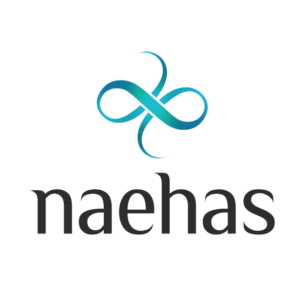A recent survey took the pulse of consumer sentiment into installment payment offerings by banks and fintech companies. In what are considered surprising findings, a report on Buy Now, Pay Later (BNPL) products, issued in February 2022, offers a look at interesting cross-demographic consumer preferences.
Considering the increased focus on as-yet unregulated Buy Now, Pay Later products, the survey is timely and telling. Here’s a summary of key takeaways, including insight from the Consumer Bankers Association (CBA) on the findings, and its call for BNPL regulatory oversight.
Surprising Survey Findings
“It’s not just those who are pinching every penny and living paycheck to paycheck who are interested in making their payments in installments, according to latest research about the growth — and potential explosion — of bank-issued buy now, pay later (BNPL) offerings,” according to the survey report. “Banking On Buy Now, Pay Later: Installment Payments And FIs’ Untapped Opportunity,” was a collaboration between PYMTS and Amount.
The authors shared findings on who currently is expressing the most interest in BNPL, (https://www.pymnts.com/buy-now-pay-later/2022/bank-issued-bnpl-interest-cuts-through-all-demographics/) as reported in a news release. An excerpt follows:
“The group showing the most interest in bank-issued BNPL plans, according to the research, is the one that seemingly needs it the least: consumers who are earning more than $100,000 annually, with almost half of them (47%) pining for the installment plan structure from their financial institutions. The next-highest level of interest comes from consumers with annual incomes of $50,000 to $100,000 (42%) and consumers earning less than $50,000 (39%).”
“That’s perhaps one of the surprising findings,” according to the report’s authors.
Additionally, the survey found that 60% of millennials, 57% of bridge millennials and 54% of Generation Z consumers say they are interested in using bank-issued BNPL plans.

The research showed that 70% of current BNPL users say they would be interested in using BNPL plans from their banks if such offerings were available, with high interest among those who already use BNPL plans and those who aren’t yet part of the practice. Meanwhile, 7% of consumers who use BNPL today said in our survey that they are less interested in a bank product than one offered by another company.
The report is based on a survey of 2,237 U.S. consumers that was conducted between Nov. 5 and Nov. 10, 2021. Participants were polled on which features they wanted from BNPL providers.” The survey evaluated consumers’ BNPL usage and interest in accessing bank-backed BNPL plans.
Emphasis on Trust Encouraging for Banks
Where does trust fit into the equation? It remains a high priority, as noted by the 53% of consumers who participated in the survey saying that trust is the most important factor when choosing a lender for a short-term credit product.
The report’s authors reflected on the potential benefit to banks, noting, “Banks have an advantage over other FinTechs when it comes to cultivating and retaining consumers’ trust, because there’s more personal interaction in banks than with FinTechs, where the goal is to keep the transaction quick and painless.”
According to the report, “Half of consumers who use short-term credit say the ability to spread their payments over time is important when selecting a short-term credit product, and about the same share (49%) report ease and convenience as important factors. Banks can offer these other factors more easily, adding weight to consumer preference for bank-issued products.”
CBA Insights on BNPL Survey
The study’s findings were also covered by the Consumer Bankers Association, CBA. In a February 9, 2021 news article, titled, “ICYMI: New Study Finds More Than 70% of BNPL users prefer banks over fintechs,” noting key findings:
- More than 70% of current-user respondents said they would be “More interested” in using bank-backed BNPL products compared to offerings supported by fintechs; while nearly 43% of all consumers expressed similar receptiveness to using a bank-backed BNPL product.
- Although Afterpay, PayPal, and Klarna currently control the top three market shares of all providers in the BNPL marketplace, roughly 80% of their current users indicated preference for a BNPL product issued through their bank.
- A majority of respondents ranked trust as their top factor in choosing a BNPL provider with the study concluding this sentiment favors banks over fintechs due to the longstanding relationships banks develop with their customers.
- 60% of millennials, 57% of bridge millennials and 54% of Generation Z consumers say they are interested in using bank-issued BNPL plans.
The CBA article also noted, “Momentum is building for a level regulatory playing field,” a sentiment echoed in a CBA OpEd piece published in American Banker in January, 2022.
It writes, “A growing share of banking activity today is occurring outside the purview of leading regulators. Driven primarily by “big-tech” and fintechs, these firms increasingly are offering financial products and services but do not abide by the same federal oversight requirements as America’s leading banks. With the BNPL market largely controlled by under-regulated fintechs and expected to reach 76.6 million users by 2025, users of these providers are at heightened risk of fraud and abuse.”

“BNPL products do not offer the standard consumer protections required of credit card providers or other regulated lenders, and their opacity regarding fees and repayment terms could easily place unwitting consumers into harmful, unaffordable debt,” according to Mike Calhoun, President of the Center For Responsible Lending (CRL), who was included in the CBA Op-Ed.
Calhoun added, “Regulators should ensure that BNPL lenders make loans only after determining the borrower’s ability to repay. Unaffordable credit may provide a quick inflow of cash, but over the longer term — which, in the case of BNPL, can be just a few weeks or months down the road — unregulated fintech products can add to the debt burden of consumers already overextended by debt […] the time for regulators to rein in BNPL is now.”
In its summary, CBA noted: “These concerns, coupled with the CFPB’s recent inquiry into the business practices of five leading fintech providers make it clear – momentum is building for policymakers to institute a level regulatory playing field and ensure all consumers are protected in the BNPL marketplace, whether they choose a fintech or bank to meet their financial needs.”
What’s Ahead for BNPL?
As will the entire finserv industry, and regulators, we’ll be keeping a close watch on this fast-growing segment. As noted in recent articles, focused on the Consumer Finance Protection Bureau’s (CFPB) December 2021 request for information from five BNLP companies, the likelihood is increasing that regulations will be in place for these companies – sooner than later.
We continually urge firms to seek and find solution partners for disclosure management.
One thing is certain: regulatory readiness will become a critical cog in the wheel of competitiveness for BNPL firms moving forward. Considering the increasing complexities, and growing competitiveness, in today’s market, the race for regulatory compliance resources is on.







